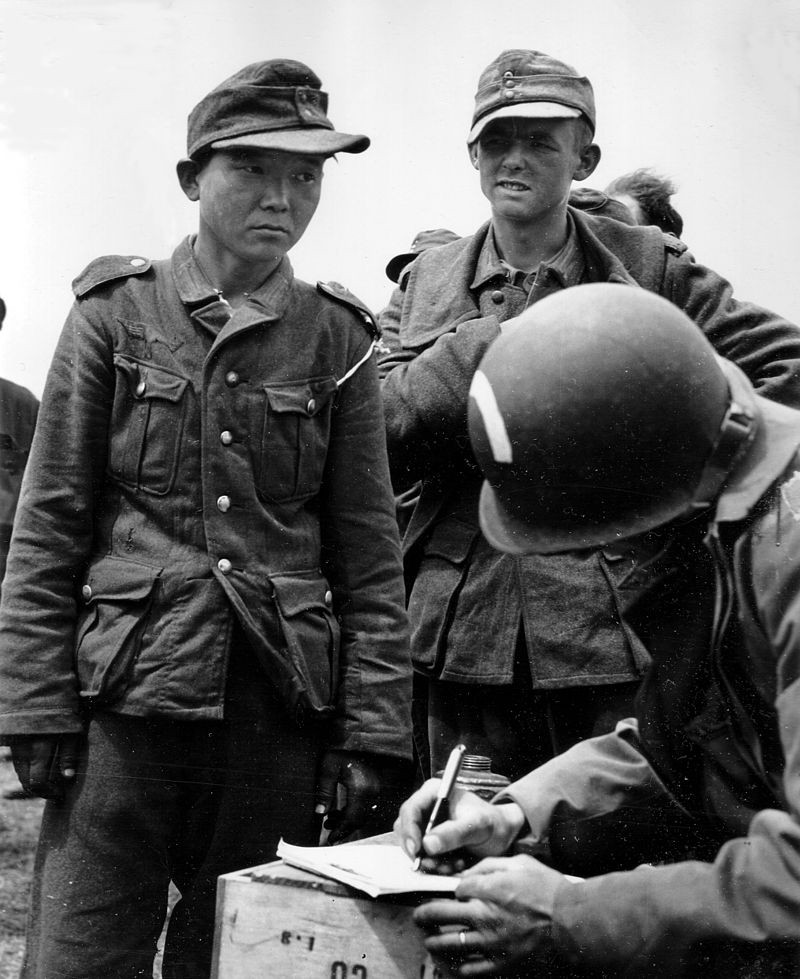
The Second World War is a fascinating period of history, and it has an innumerable amount of incredible stories. One of these unbelievable tales involves a soldier of Korean descent who fought and bled for three different countries: Japan, the USSR, and Nazi Germany. Even upon his final capture, it was initially believed that he was a Japanese soldier in a German uniform.
Yang Kyoungjong’s story begins in 1938. He was 18 years old and living in Manchuria, which was occupied by Japan from 1931 until the end of the Word War II. Korea was used as a breadbasket and a pool of manpower to fuel Japan’s conquests. Additionally, young Korean men were frequently conscripted into the Japanese military and used as occupation troops in captured Chinese territories. Japan invaded China in 1932 following several trumped-up border incidents. After conquering large swathes of the countryside, Japan installed a puppet government in Manchuria. The puppet government’s desire to increase its territory ran afoul of Soviet Russia and a number of border incidents were soon followed by battles at Khalkhin Gol and Nomonhan.
With the inception of World War II, Kyoungjong was immediately conscripted by the Imperial Japanese Army into Japan’s Kwantung army division to fight against the USSR to the north of Manchuria. At the time, the Kwantung division was the largest and most prestigious of all of Japan’s forces. Kyoungjong was taken as a prisoner of war by the Red Army during the Battle of Khalkhin Gol. This intense struggle between the two powers ultimately raged from May until September 1939, involving over 100,000 troops and 1,000 tanks and aircraft. A staggering figure of 30,000 - 50,000 men were wounded or killed. And in the final climactic battle on August 31, 1939, the Japanese were crushed.
Yang Kyoungjong’s fate thus fell into Soviet hands, as he was then shipped off to a labor camp. However, due to a shortage of manpower, the USSR forced whoever they could into military service, which meant Kyoungjong entered the fray as a Red soldier. After a year, Kyoungjong was once again taken as a prisoner of war by the Germans at the Third Battle of Kharkov. Arguably in this single battle, the Germans were able to prevent large swaths of the Ukraine from being lost to the Soviets, and it is considered a major victory for the Germans on the Eastern front.
However, the Germans were not immune to military losses, and they struggled with a shortage of manpower. Kyoungjong again found himself as a prisoner of war, this time drafted as a provisional soldier fighting alongside German forces. The Germans had a history of conscripting captured men into their army. Whether by choice or by force, it formed an essential source of manpower in the Second World War. The German army had two classes of foreign conscripts – fighting men and so-called hilfswillige, or “Hiwis” who were volunteers to help in mostly non-combat roles. Hiwis were usually used as supply troops or as construction labor. Unfortunately, as the war went on many of the Hiwis would be pressed into combat roles.
In 1944, he was transported even farther west to France. There, he joined the 709 Infanterie Division and was posted to defend the port of Cherbourg, in Normandy, on D-Day. Fatefully, Kyoungjong would fight against the Allied forces in Normandy, France on June 6, 1944. As the Allies successfully took over the beaches, Yang was captured once again, this time by British forces. He spent some time in an English prisoner of war camp before being sent to a camp in the United States, where he’d spend the rest of the war. The war over and no longer a prisoner, Yang had almost been shipped around the entire globe. He decided to stay in the United States, becoming a citizen and living out the rest of his life there until he died in Illinois in 1992.
For years, the famous photo that supposedly depicts a captured Kyoungjong in a Wehrmacht uniform was labelled in the US National Archives as “Japanese man.” Some historians and a South Korean documentary team tasked with investigating his story concluded that they couldn’t identify the prisoner in the photo. While historians have found that Korean nationals were conscripted in the German army, some believe Yang’s story was created from thin air as a way to solidify the mythos of the “Japanese man” in the photo.
True or not, Yang Kyoungjong’s unwitting journey from Korea, to Northern China, to Ukraine and finally to France is a perfect representation of just how sprawling the Second World War was, and how so many people’s lives were changed and displaced forever. We might never learn what really happened to him, or if he existed at all, but the story of the unwitting soldier who fought for three armies rings true to many, even now.
